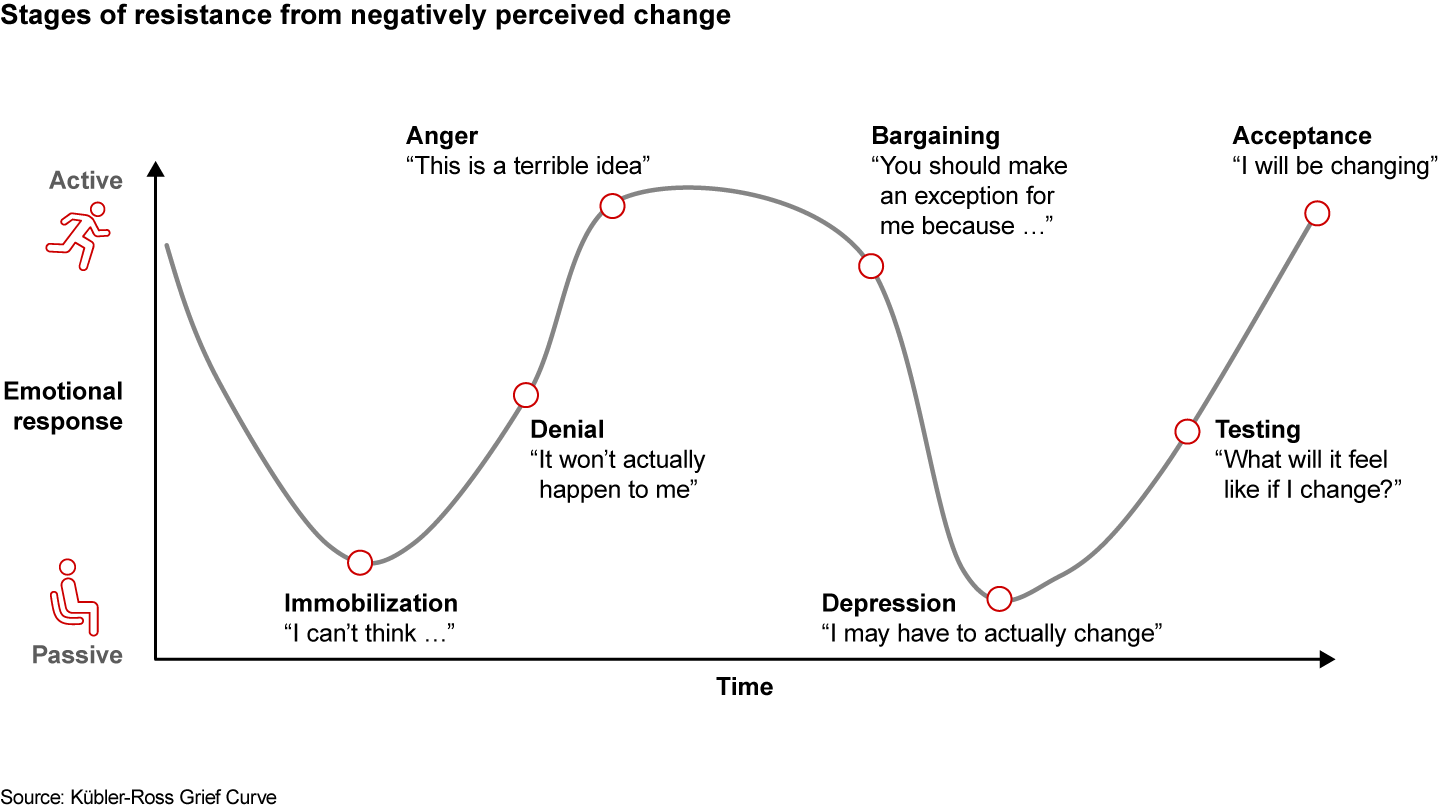Managing Change Blog

During a period of change, it’s not unusual for people to feel discomfort, unhappiness even. What’s an executive to do when, rather than embracing change, their people are resisting it?
One good option: Go to your office, close the door, and quietly celebrate.
Whether dealing with the ups and downs of external events or overseeing an internal overhaul, it’s valuable to recognize and appreciate the benefits of resistance. Resistance is a sign that people still care enough to complain—they haven’t given in to apathy and checked out. It shows that they’re taking the change seriously. They have questions about what’s happening.
Resistance will occur whether the change is positively or negatively perceived, because the loss—of control, identity, relationships, familiarity—and even grief are there either way. Don’t take it personally, and don’t push it underground. The only resistance you can’t deal with is the resistance you can’t see.
Here are three ways leaders can answer natural resistance.
1. Work to shift employee mindsets from seeing the change as a threat, to recognizing the opportunities it offers and how they can make the change better.
Several years ago, a business services organization launched a new business line. Its approach went against the organization’s cultural grain, and there was a lot of skepticism to overcome across the organization. The resistance sometimes seemed too deep to overcome, disheartening for the team launching the new line. Finally, at a team meeting, the members struck upon a metaphor: Weebles. A children’s toy from the 1970s, Weebles are egg-shaped dolls with a well-known tagline, “Weebles wobble, but they don’t fall down.” For the group pioneering the new business, the message was: Take all the feedback with gratitude, measure it, and learn from it, but don’t let it knock you down. The leader of the effort bought Weebles for the whole team. Printed across them, “Thank you for the feedback.”

2. Embrace resistance, don’t let it win.
The normal reaction to resistance is to take a metaphorical—and physical—step back. But the more you do that, the more space you create for questions. The doom loop of doubt and anxiety intensifies. Instead, step forward with empathy. Step toward the resistance, but remember to focus on the reasons for the change and what the new future will look like.
During a recent merger of two pharmaceutical companies operating in different geographical regions, leaders within the organizations were allowed to continuously question the rationale for the integration. Six months after the announcement of the merger, the company was trapped in a spiral of anger, bargaining, and denial. The leadership team continued asking top management how to explain to their teams the rationale for the combination, despite having heard the case for change many times. The acquiring COO broke the loop by traveling to meet with the acquired team face to face, listening to them, and then clearly explaining that it was going ahead, why, and what the benefits were. By moving through the resistance, the COO was able to help the collective team move forward, start to internalize why this change was a good idea, and realize the deal’s potential value.
3. Help your people work through the resistance.
This starts with leading with empathy. Humanize the experience. Talk in person, listen even more, and recognize the emotion. Allow people the space to grieve and help them honor the past. Moving too quickly to the positive future may feel disconnected from the anger or grief people are feeling. Help them process their emotions as quickly as possible, however, so they don’t get trapped in despair. Finally, like the pharmaceutical COO, address the questions head on, focusing on:
- the case for change—why we’re doing it and what’s in it for them;
- how we’re going to make the change work together; and
- what they can control.
